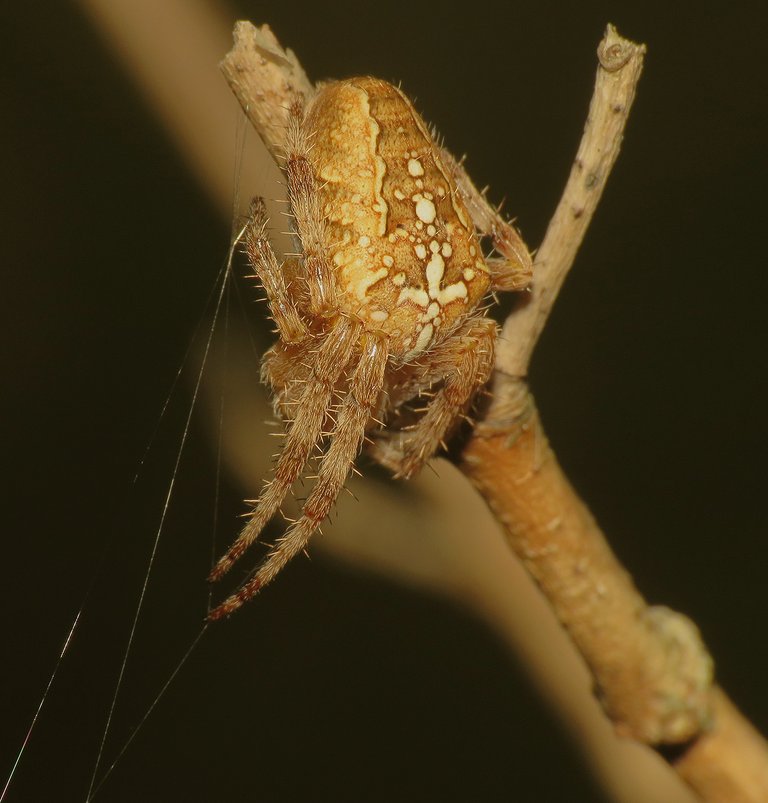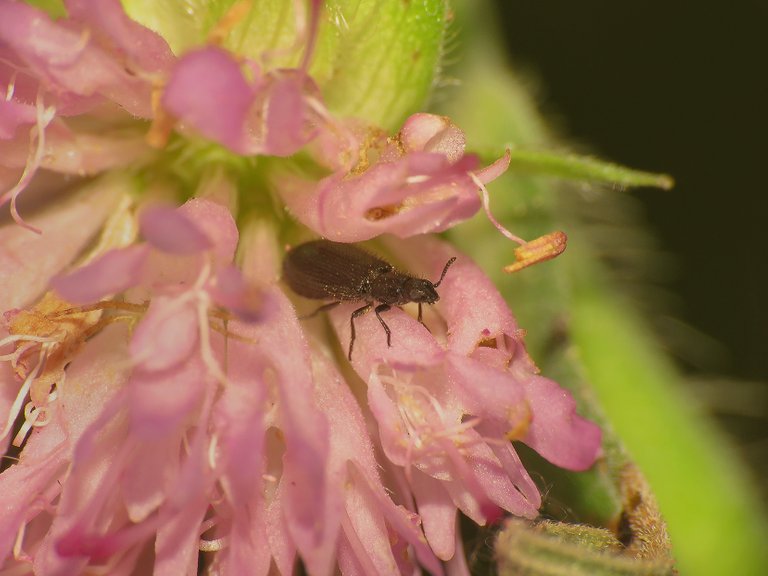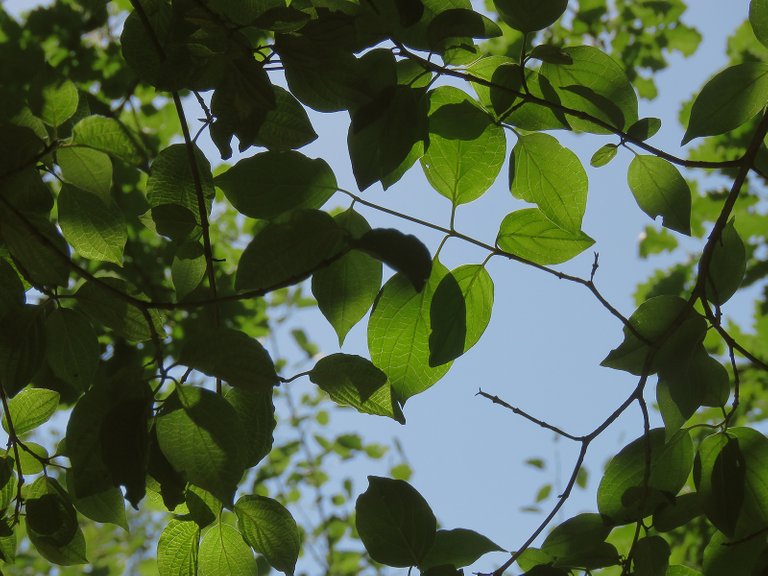To take my Wednesday walk today, I first drove about sixty kilometers, to the woods in the area around the small city of Pazin.

I parked the car by the side of the road and walked along the narrow path bordered by lush green vegetation.
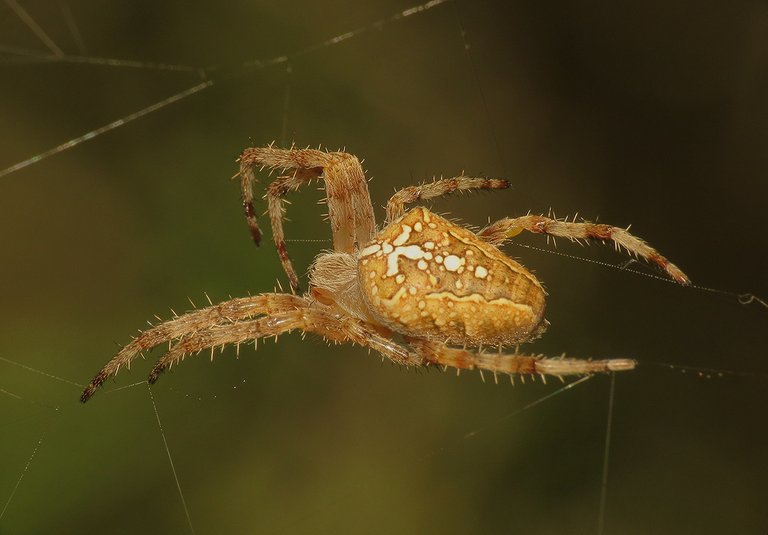
I was stopping from time to time to photograph the small details around me. Here you can see the Araneus diadematus spider.
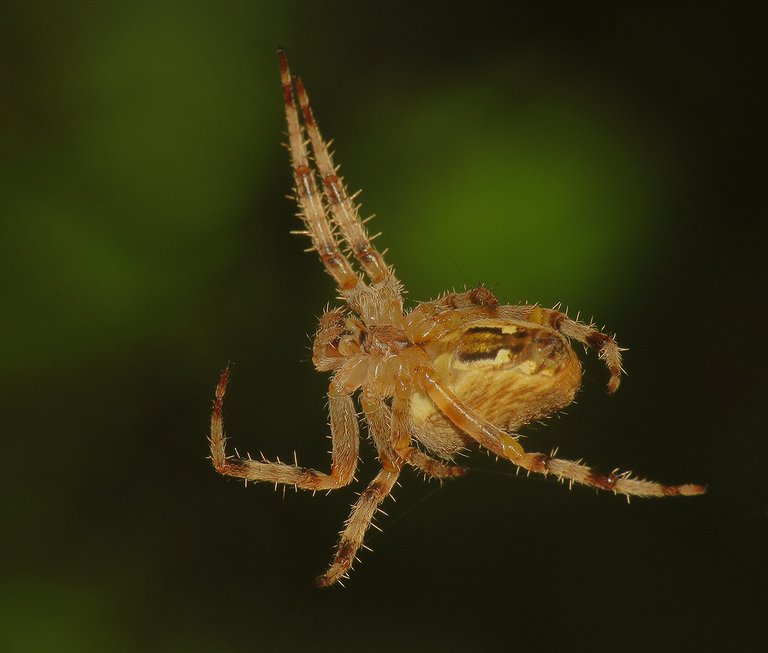
The spider was busy repairing its web for a minute or two, and then ...
... took a crouched resting position on the twig in the copper corner of the web. Three of its eight legs were in contact with the web, so if the prey will get caught by the sticky threads, it wouldn't pass unnoticed. While crouched on the top of the twig, the Araneus diadematus is very well camouflaged and hard to notice.
After some more walking ...

... I came across a cricket. The Pachytrachis striolatus bush cricket.

A bit further, on the small clearance near the path ...

... I photographed a small crab spider among the tiny yellow flowers of the Galium verum plant.

On the nearby flowerhead of the Knautia arvensis plant ...
... I found this small bug from the Miridae family. Can't tell you the exact species.
On another cluster of Knautia arvensis flowers, I found a small beetle. This is some species from the Melyridae family. Don't know which one exactly.
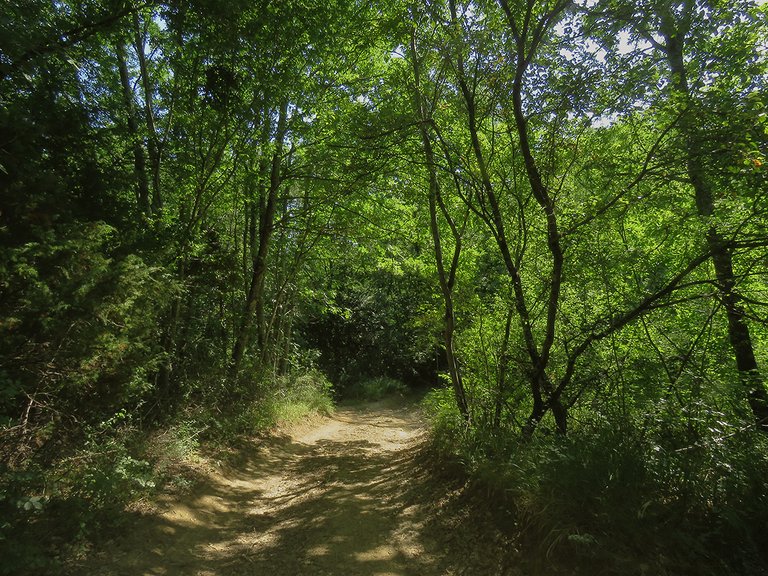
On my way back to the car, while passing through the green tunnel shown in this photograph ...
... I spent some time photographing the leaves above and around me. In these four shots, you can see the foliage of the Populus tremula trees.
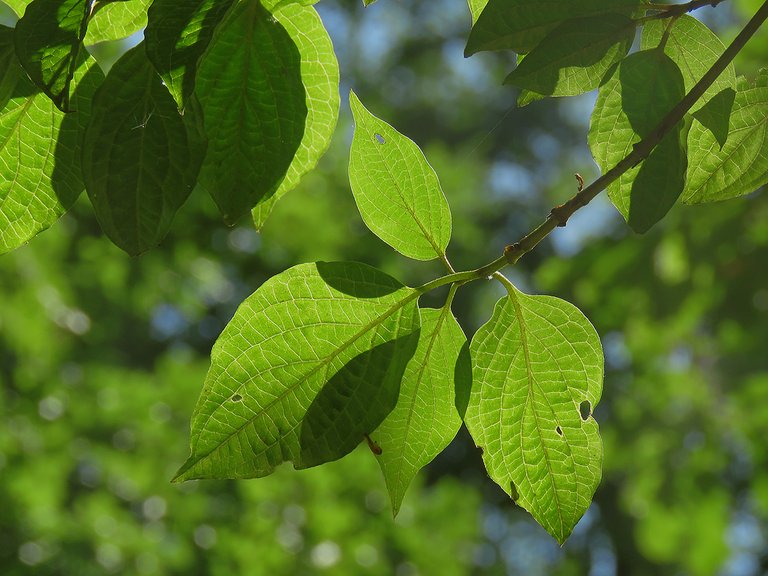
Here you can see the leaves of some other plant. Can't tell you the name of the species or if it was a tree or some kind of climbing plant. In the following photograph ...

... you can see also the tiny fruits of that plant. The foliage was cool, but soon I found something more interesting ...
... down on the ground.

It was a big moth.
The Marumba quercus. Commonly known as the Oak Hawk-moth.
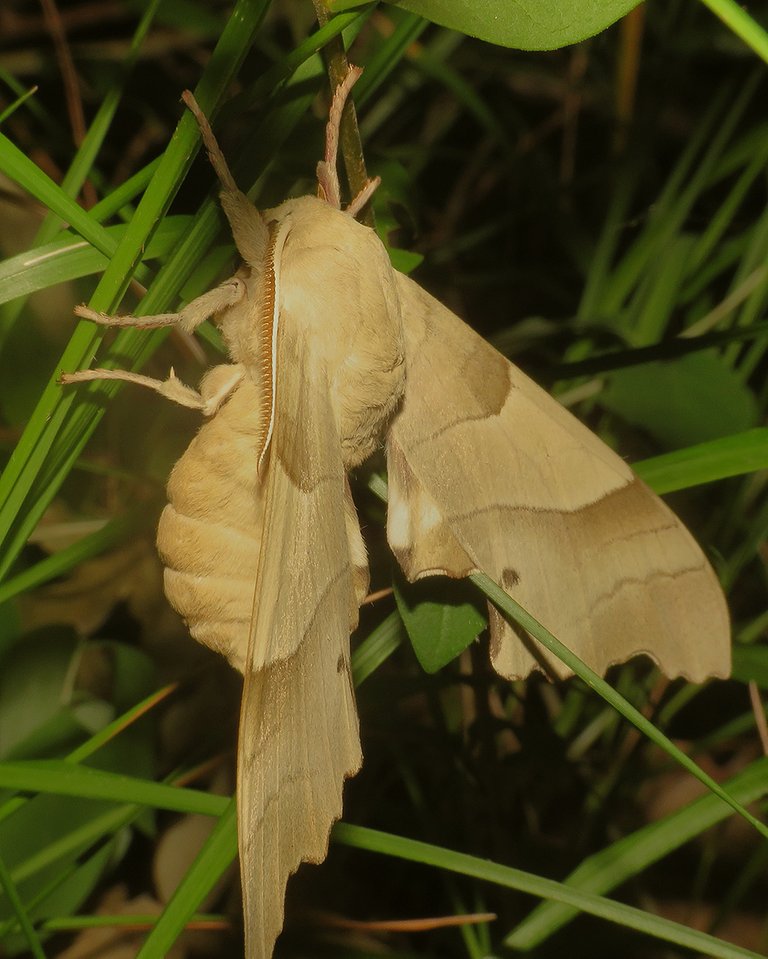
It's a strictly nocturnal species that I encounter very rarely.
It's covered with dense fur and it has a cute face. What looks like fur is actually made of modified scales.

The larvae usually feed on small, shrub-like oak trees, and the lower branches of medium-sized oaks. Adults don't feed.
After taking this last close-up...
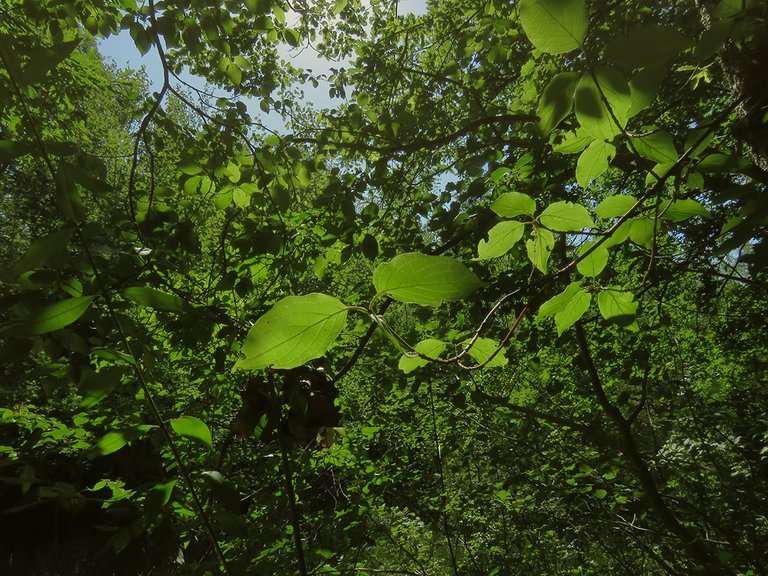
... it was time to get in the car ...
... and drive back home.
AND THAT'S IT. AS ALWAYS IN THESE WALKS ON HIVE, THE PHOTOGRAPHS ARE MY WORK - THE END.
